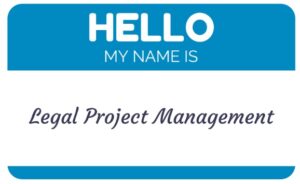A previous Banksy effort. (Photo by Matthew Horwood/Getty Images)
You may have seen the headlines lately, saying that famed pseudonymous street artist Banksy was being “forced” into opening up a pop up store in London in order to secure a trademark and prevent “a greetings card company” from selling “fake Banksy merchandise.” Banksy also claimed that the company was “attempting to take custody of my name.” Banksy and Banksy’s artwork are somewhat famous for protesting against commercial incentives and traditional capitalism — so many people rushed to Banksy’ defense because, from the initial description, it sounded like Hallmark or some sappy corporate giant of that nature was trying to rip off Banksy images for its own benefit.
Turns out that the story is very, very different. And it doesn’t make Banksy look very good at all once you understand the details. First, the “greeting card” company in question, Full Colour Black, has responded via a Facebook post, and you realize it’s a tiny home-based business and it’s not trying to take anyone’s name or sell fake merchandise at all. Indeed, contrary to some of the reporting, it’s not “suing” over anything. It just put forth a completely legitimate challenge to Banksy’s sketchy and probably illegitimate trademark on the “flower bomber” image (the official name of which is apparently “Rage, Flower Thrower.”)
As you know, to get a trademark, you need to show “use in commerce.” And Banksy wasn’t selling the flower bomber image — though it does appear others are selling sculptures and posters of the work that was produced (as always) in secret, in Jerusalem, in 2005. In 2014, an organization representing Banksy, with the clever name of “Pest Control Office Limited”, filed and received the registered trademark on the image.
However, since it wasn’t clear how the image could qualify as a trademark in the first place, a small three person greeting card company sought to invalidate the trademark. As Full Colour Black explains:
Loud Tie Weasels are being used to paint our tiny business as a ‘big corporate group’ and paint Banksy as the harddone-by artist. There are only three people in our small business. We don’t have high powered legal teams on three continents, we don’t have a Management teams dealing with Hollywood and we certainly don’t have highly effective PR teams. We also can’t afford to open high earning hotels with celebrity acts on the grand piano nor can we steal the thunder from Stormzy’s amazing performance at Glastonbury.
All of that is Corporate Activity. We are not corporate… we sell greetings cards from our home. It is ENTIRELY untrue that we are attempting to “take custody” of his name”. This line has been invented by his Corporate Lawyers to try and gain sympathy from you. He’s made this up!!!
As they further explain, they run a small business that does photography and sells cards involving public graffiti:
We legally photograph public graffiti and make it available to you – the public. We know that you don’t have the unlimited budgets of Angelina Jolie or Brad Pitt or Christine Aguilera. You cannot afford to buy one of his official canvases. We make cards because Banksy never makes anything available to his fans. We all love his graffiti. He doesn’t want you to have it and he’s hoping to trick you into thinking that we’re hurting his business. We’re not.
We don’t infringe his rights in any way. We don’t use his trademarks or his brand name. We make cards that feature Banksy’s Public Graffiti. It’s a legitimate enterprise.
So… that last part did make me wonder a bit — because it’s not exactly clear if the statements here are true. As we’ve noted in the past, there are significant legal questions around the copyright status of public graffiti art, with some courts coming down on the side of the graffiti artists, sometimes in ludicrous ways. And, of course, that’s resulted in more and more litigation.
But… that’s all about copyright. In reading the news coverage of all of this, I was stumped as to why were were discussing trademark at all — until I realized something kind of important. Banksy is using trademark because Banksy can’t use copyright without revealing who Banksy is. Full Colour Black’s lawyer, Aaron Wood, explains:
“We are contesting the validity of one of his EU trademarks on the basis that he has freely permitted it to be reproduced such that it no longer functions as a trademark (if it ever did), on the basis that he never intended to use it as a trademark and that he is trying to register for collateral purposes (ie, to avoid evidential issues with copyright and to avoid having to file a ‘statement of use’ in the US).”
Either way, Banksy, on the advice of “arts lawyer” Mark Stephens, seems to think that setting up a pop up shop with the (okay, absolutely brilliant) name “Gross Domestic Product”, which will exist for a few weeks but never actually open to the public (though sales will happen online), somehow will re-establish the trademark in question:
Mark Stephens, an arts lawyer and founder of the Design and Artists Copyright Society, called the case a “frankly ludicrous litigation” and is giving Banksy legal advice.
“Banksy is in a difficult position,” he said. “Because he doesn’t produce his own range of shoddy merchandise and the law is quite clear – if the trademark holder is not using the mark, then it can be transferred to someone who will.”
Except, as with much of this story coming from the Banksy side, this is absolutely misleading. There isn’t “litigation” happening at all. And this is not about “shoddy merchandise.” This is about challenging the legitimacy of what certainly looks like an illegitimate trademark. And Full Colour Black’s attorney highlights that, if anything, this shop harms Banksy’s case, because they’re not even arguing that the trademark fails for lack of use in commerce, but rather that the whole trademark is a sham to get around copyright law — and this stunt supports that argument:
“If it were a revocation case then the strategy would be ill-conceived,” he claims. “The real error, however, is that this isn’t a revocation case on the basis of non-use, so it’s a frankly pointless step which doesn’t stand up to scrutiny from anyone with a modicum of knowledge of trademark law. In fact, this has strengthened the arguments that the marks are a false attempt to monopolise his work in bad faith [and to] circumvent copyright law and trademark law. Banksy may be a subversive character but the same law applies to him.”
Indeed, as others have noted, Banksy has been increasingly aggressive about enforcing trademark claims regarding people selling works based on Bansky art — despite historically arguing against things like copyright:
Having once claimed that copyright is for losers, Banksy has been ramping up his legal position for several months now. At the end of 2018, the artist’s handling service Pest Control took action against an Italian company that organised an exhibition, The Art of Banksy—A Visual Protest, for Milan’s Mudec Museum.
In February this year, the judge ruled in favour of Banksy’s request for all merchandise bearing his name to be removed from the museum’s shop, but promotional materials using his name were allowed to remain. The judge noted that the documents filed in the proceedings showed a limited use of the Banksy brand.
The whole situation is kind of crazy when you think about it. Banksy doesn’t want to use the law that actually covers the artwork, copyright, because that would likely require an outing of whoever is behind Banksy. And, according to Banksy, “copyright is for losers.” But Banksy as a concept has become so profitable that now it’s suddenly trying to stop anyone else from making money from Banksy-related works — and appears to be abusing trademark to make that happen.
Full Colour Black, the greeting card company, notes that it’s been trying for years to send Banksy some money, but that it’s gotten nowhere:
We’ve written to Banksy, his team and his lawyers many times since 2010 to say that we want to pay royalties to him. He doesn’t want it. We believe he’s making so much money already; a couple of hundred pounds a year from us probably wouldn’t even cover the cost of his handmade shoes.
I’ll say it once again… don’t be fooled folks. He’s using weasels to paint our tiny little business as a ‘big corporate’ and paint himself as the poor artist. Look beyond his slick PR. He’s out of your league but he wants your sympathy. If you really want to support the little guy… stand by us. We’ll continue to offer you amazing graffiti and we can post it to you across the world.
This really does look like Banksy gone corporate in the worst sense — abusing trademark law for no good reason at all and (worse) lying about it and pretending that a small home-based business is a big corporate entity trying to “seize” Banksy’s name, when that’s not even close to the truth. Banksy could just confirm that copyright law (and much of trademark law) is for losers, and let this small shop sell these cards that only serve to make Banksy’s own artwork more and more valuable. The fact that all of this comes at a time when Banksy just sold a painting for $12 million, and part of the reason it’s worth that is the kind of fame driven by people photographing and sharing Banksy’s work, suggests that maybe Banksy should ditch some of the “copyright” lawyers advising Banksy, and go back to some more Banksy roots.
Banksy’s Fake Store Is An Attempt To Abuse Trademark Law To Avoid Copyright Law
More Law-Related Stories From Techdirt:
How A Right To Be Forgotten Stifles A Free Press And Free Expression
It’s Time For The Academic World To See The Positive Side Of Negative Results
Attorney Who Sued Grindr Responds Extremely Poorly To The Supreme Court’s Rejection Of Her Section 230 Lawsuit




















